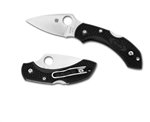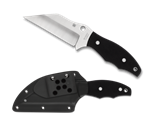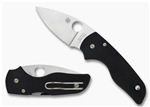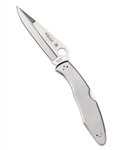

|

|


|

|


|
|
|
|
|
|
|
|
|
Blade Steel: S30V
Handle:
Blade Length:
Weight:
Open Length:
|
Blade Steel: S30V
Handle:
Blade Length:
Weight:
Open Length:
|
Blade Steel: S30V
Handle:
Blade Length:
Weight:
Open Length:
|

|


|

|


|

|


|
|
|
|
|
|
|
|
|
Blade Steel: S30V
Handle:
Blade Length:
Weight:
Open Length:
|
Blade Steel: BD1N
Handle: FRCP
Blade Length: 3.37"
Weight: 3.0 oz
Open Length: 8.03"
|
Blade Steel: S30V
Handle:
Blade Length:
Weight:
Open Length:
|

|


|

|


|

|


|
|
|
|
|
|
|
|
|
|
Blade Steel:
Handle:
Blade Length:
Weight: .
Open Length:
|
Blade Steel: VG-10
Handle: FRN
Blade Length:
Weight:
Open Length:
|

|


|

|


|

|


|
|
|
|
|
|
|
|
|
Blade Steel: S30V
Handle:
Blade Length:
Weight:
Open Length:
|
Blade Steel: S30V
Handle:
Blade Length:
Weight:
Open Length:
|
🇨🇦 Spyderco Atlantic Salt – H1 Serrated Blade & Yellow FRN Handle (Canada)
Corrosion-proof. Rescue-ready. Built for the harshest conditions.
The Spyderco Atlantic Salt is the ultimate folding knife for Canada’s wet, salty, and extreme environments. Featuring a completely rustproof H1 steel blade, fully serrated for aggressive cutting, and a high-visibility yellow FRN handle, this knife is trusted by maritime professionals, first responders, and outdoor enthusiasts across the country.
🌊 Designed for Canada’s Coasts, Boats & Backwoods
-
H1 Steel Blade – 100% Rustproof
H1’s nitrogen-based formula makes it completely impervious to rust—even in saltwater. Serrated SpyderEdge excels at slicing rope, webbing, and fibrous materials.
-
Rescue-Optimized Sheepsfoot Tip
Safe to use in high-stress scenarios—no sharp point to accidentally puncture lifeboats or gear during emergencies.
-
Bright Yellow FRN Handle
Easy to spot if dropped in water, grass, or snow. Bi-directional texture ensures grip even when wet or gloved.
-
Back Lock & Ambidextrous Design
Ultra-secure lock with Spyderco’s classic round hole and a 4-position clip—carry it your way, left or right.
📐 Specifications & Features
-
Overall Length: 8.25" (210 mm)
-
Closed Length: 4.59" (117 mm)
-
Blade Length: 3.67" (93 mm)
-
Edge Length: 3.19"
-
Blade Thickness: 0.118" (3.0 mm)
-
Blade Steel: H1 (Fully Rustproof)
-
Blade Edge: Serrated (SpyderEdge)
-
Blade Grind: Hollow
-
Handle Material: Yellow FRN (Fiberglass Reinforced Nylon)
-
Lock Mechanism: Back Lock
-
Pocket Clip: 4-Position (Tip-Up/Down, Left/Right)
-
Weight: 2.75 oz (78 g)
-
Made in: Japan
📦 Ideal For:
-
Canadian boating, fishing, and marine use
-
Search and rescue & EMS professionals
-
Ice fishers, kayakers, and coastal hikers
-
Anyone needing a zero-maintenance, high-visibility cutting tool
🇨🇦 Why Buy From Tetragon
-
✔️ Ships fast from Mississauga, Ontario
-
✔️ CAD pricing – No duties or surprise fees
-
✔️ Trusted Spyderco Canada dealer since 1985
🛒 Order the Spyderco Atlantic Salt today and get a rescue-grade knife that laughs at rust and stands up to Canada’s harshest conditions.
|

|


|

|


|

|


|
|
|
|
|
|
|
|
|
Blade Steel: S30V
Handle:
Blade Length:
Weight:
Open Length:
|
Blade Steel: S30V
Handle:
Blade Length:
Weight:
Open Length:
|
🇨🇦 Spyderco Matriarch 2 – Emerson Opener, Serrated VG-10 Blade & Black FRN (Canada)
Rapid deployment. Relentless performance.
The Spyderco Matriarch 2 Emerson Opener is a purpose-built defensive tool, designed to deliver maximum cutting power in an instant. Featuring the patented Emerson Wave® opening feature, fully serrated SpyderEdge, and a super-aggressive reverse-S VG-10 blade, this knife is trusted by security professionals, law enforcement, and prepared civilians across Canada.
⚡ Instant Access. Maximum Damage. Minimal Effort.
-
Emerson Wave Opener
Hooks onto your pocket during draw for automatic deployment—no buttons, no waiting.
-
Reverse-S Blade with SpyderEdge Serrations
Slices through tough materials with minimal effort. Engineered for self-defense and emergency cutting.
-
VG-10 Stainless Steel
A proven Japanese steel that resists corrosion and holds an edge, even in wet or cold Canadian climates.
-
Lightweight & Grippy FRN Handle
Black bi-directional texture ensures control in high-stress conditions, rain, or gloves.
-
Ambidextrous Carry & Lockback Strength
4-position clip and secure lock make it fully adaptable for left or right-hand users.
📐 Specifications & Features
-
Overall Length: 8.55" (217 mm)
-
Closed Length: 5.00" (127 mm)
-
Blade Length: 3.57" (91 mm)
-
Edge Length: 3.20"
-
Blade Thickness: 0.118" (3.0 mm)
-
Blade Steel: VG-10
-
Blade Style: Reverse-S
-
Blade Grind: Hollow
-
Blade Edge: Fully Serrated (SpyderEdge)
-
Handle Material: Black FRN
-
Lock Mechanism: Back Lock
-
Pocket Clip: 4-Position (Tip-Up/Down, Left/Right)
-
Weight: 3.5 oz (99 g)
-
Made in: Japan
📦 Ideal For:
-
Self-defense practitioners & personal protection
-
Law enforcement & security personnel across Canada
-
Emergency responders needing rapid deployment
-
Anyone requiring maximum cutting ability in compact form
🇨🇦 Why Buy From Tetragon
-
✔️ Fast shipping from Mississauga, Ontario
-
✔️ CAD pricing – No duties or currency surprises
-
✔️ Trusted Spyderco dealer serving Canadians since 1985
🛒 Order the Spyderco Matriarch 2 today and equip yourself with one of the most efficient defensive folders on the market—purpose-built for fast action in Canada.
|

|


|

|


|

|


|
|
|
|
|
|
|
|
|
Blade Steel: S30V
Handle:
Blade Length:
Weight:
Open Length:
|
Blade Steel:
Handle:
Blade Length:
Weight:
Open Length:
|
Blade Steel: S30V
Handle:
Blade Length:
Weight:
Open Length:
|

|


|

|


|

|


|
|
|
|
|
|
|
|
|
Blade Steel: CTS BD1N
Handle:
Blade Length:
Weight:
Open Length:
|
Blade Steel: CTS BD1N
Handle:
Blade Length:
Weight:
Open Length:
|
🇨🇦 Spyderco Native Chief Lightweight – CTS-BD1N Blade & Black FRN Handle (Canada)
A full-sized folder that disappears in your pocket.
The Spyderco Native Chief Lightweight is an ultra-slim, featherweight version of the popular Native Chief—designed for those who want big cutting performance without the bulk. With a 4.08” CTS-BD1N blade, durable FRN handle, and ambidextrous back lock, this USA-made folder is built for serious Canadian EDC and field use.
🪓 Power, Precision & Portability
-
CTS-BD1N Blade Steel
A nitrogen-based stainless steel that offers excellent corrosion resistance, ease of sharpening, and surprising edge retention—ideal for Canadian conditions.
-
Black FRN Handle Scales
Molded for strength and grip, the bi-directional texturing ensures traction with gloves or wet hands.
-
Back Lock Mechanism
Time-tested, ambidextrous, and incredibly secure—favoured by traditionalists and professionals alike.
-
Lightweight with Deep Carry Clip
Weighs just 2.9 oz, making it one of the lightest 4-inch blade knives in Spyderco’s lineup.
📐 Specifications & Features
-
Overall Length: 9.08" (231 mm)
-
Closed Length: 5.08" (129 mm)
-
Blade Length: 4.08" (104 mm)
-
Edge Length: 3.58"
-
Blade Thickness: 0.125" (3.2 mm)
-
Blade Steel: CTS-BD1N
-
Blade Grind: Full-Flat
-
Handle Material: Black FRN (Fiberglass Reinforced Nylon)
-
Lock Mechanism: Back Lock
-
Pocket Clip: Tip-Up (Left/Right, Deep Carry Wire Clip)
-
Weight: 2.9 oz (82 g)
-
Made in: USA (Golden, Colorado)
📦 Ideal For:
-
EDC users wanting a long blade with minimal carry weight
-
Hunters, tradespeople, and first responders
-
Backpackers and bushcrafters in remote Canadian regions
-
Fans of slim, ambidextrous knife design
🇨🇦 Why Buy From Tetragon
-
✔️ Fast shipping from Mississauga, Ontario
-
✔️ CAD pricing – No duties or conversion charges
-
✔️ Trusted Canadian Spyderco dealer since 1985
🛒 Order the Spyderco Native Chief Lightweight today for a full-sized edge that won’t weigh you down—made in the USA and ready for Canada.
|

|


|

|


|

|


|
|
|
|
|
|
|
|
|
Blade Steel: CTS BD1N
Handle:
Blade Length:
Weight:
Open Length:
|
Blade Steel: BD1N
Handle: FRCP
Blade Length: 3.37"
Weight: 3.0 oz
Open Length: 8.03"
|
Blade Steel: S30V
Handle: G-10
Blade Length: 2.45"
Weight: 2.5oz.
Open Length: 5.92"
|

|


|

|


|

|


|
|
|
|
|
|
|
|
|
Blade Steel: VG-10
Handle:
Blade Length: 4.125"
Weight: 5.6oz.
Open Length: 9.438"
|
Blade Steel:
Blade Length:
Weight:
Open Length
|
Blade Steel: BD1N
Handle: FRCP
Blade Length: 3.37"
Weight: 3.0 oz
Open Length: 8.03"
|

|


|

|


|

|


|
|
|
|
|
|
|
|
|
Blade Steel: BD1N
Handle: FRCP
Blade Length: 3.37"
Weight: 3.0 oz
Open Length: 8.03"
|
🇨🇦 Spyderco Native Chief – CPM S30V Blade & Black G-10 Handle (Canada)
Longer reach. Legendary lineage.
The Spyderco Native Chief stretches the proven design of the original Native into a full-sized, high-performance folding knife. With a nearly 4-inch CPM S30V full-flat ground blade, durable black G-10 handle, and robust lockback mechanism, it’s built for Canadian users who demand precision, strength, and all-day comfort in a larger format.
🗡️ Full-Size Utility in a Lightweight Frame
-
CPM S30V Blade Steel
Premium stainless steel chosen for edge retention, corrosion resistance, and cutting power—ideal for the Canadian outdoors or duty use.
-
Full-Flat Ground Blade
Offers excellent slicing performance and clean, controllable cuts for utility, tactical, or field applications.
-
Classic Lockback Mechanism
Reliable, ambidextrous, and strong—trusted for decades by those who demand a no-fail locking system.
-
G-10 Handle Scales
Contoured and textured for a comfortable, secure grip without extra weight.
📐 Specifications & Features
-
Overall Length: 9.08" (231 mm)
-
Closed Length: 5.08" (129 mm)
-
Blade Length: 4.08" (104 mm)
-
Edge Length: 3.58"
-
Blade Thickness: 0.125" (3.2 mm)
-
Blade Steel: CPM S30V
-
Blade Grind: Full-Flat
-
Handle Material: Black G-10
-
Lock Mechanism: Lockback
-
Pocket Clip: 4-Position (Tip-Up/Down, Left/Right)
-
Weight: 3.9 oz (111 g)
-
Made in: USA (Golden, Colorado)
📦 Ideal For:
-
Canadian outdoorsmen, hunters & campers
-
EDC users who prefer longer blades
-
Law enforcement & tactical professionals
-
Spyderco fans seeking maximum cutting power in a slim design
🇨🇦 Why Buy From Tetragon
-
✔️ Ships fast from Mississauga, Ontario
-
✔️ CAD pricing – No duties, no exchange rate shocks
-
✔️ Trusted Canadian Spyderco retailer since 1985
🛒 Order the Spyderco Native Chief today and experience long-blade performance in a lightweight, all-purpose folder—now available in Canada.
|
Blade Steel: BD1N
Handle: FRCP
Blade Length: 3.37"
Weight: 3.0 oz
Open Length: 8.03"
|

|
 LOCATED IN MISSISSAUGA ONTARIO CANADA
LOCATED IN MISSISSAUGA ONTARIO CANADA
 EASY & SECURE PAYMENT METHODS
EASY & SECURE PAYMENT METHODS
 FAST TURNAROUND TIMES
FAST TURNAROUND TIMES
 LOCATED IN MISSISSAUGA ONTARIO CANADA
LOCATED IN MISSISSAUGA ONTARIO CANADA
 EASY & SECURE PAYMENT METHODS
EASY & SECURE PAYMENT METHODS
 FAST TURNAROUND TIMES
FAST TURNAROUND TIMES